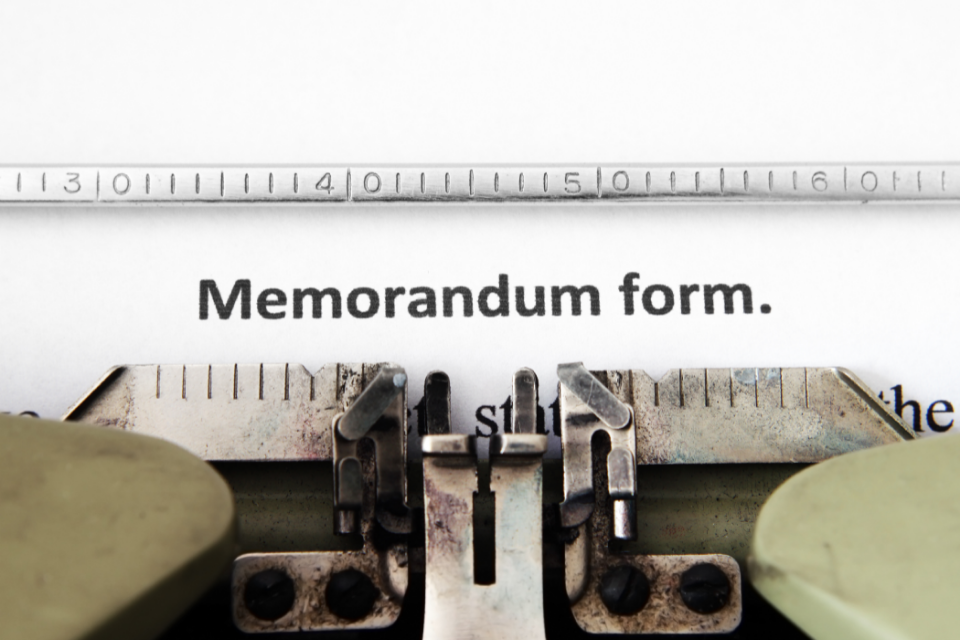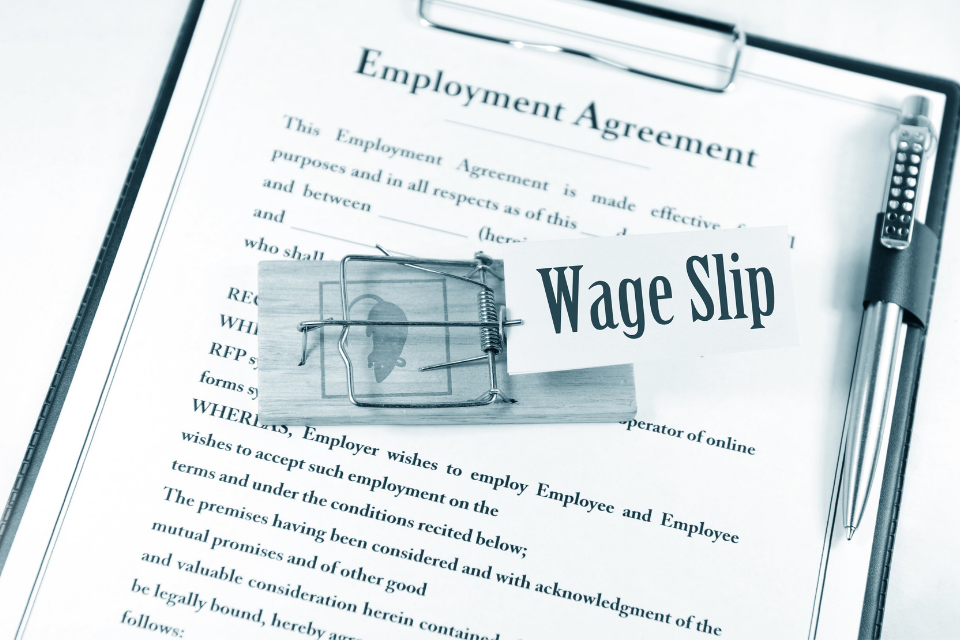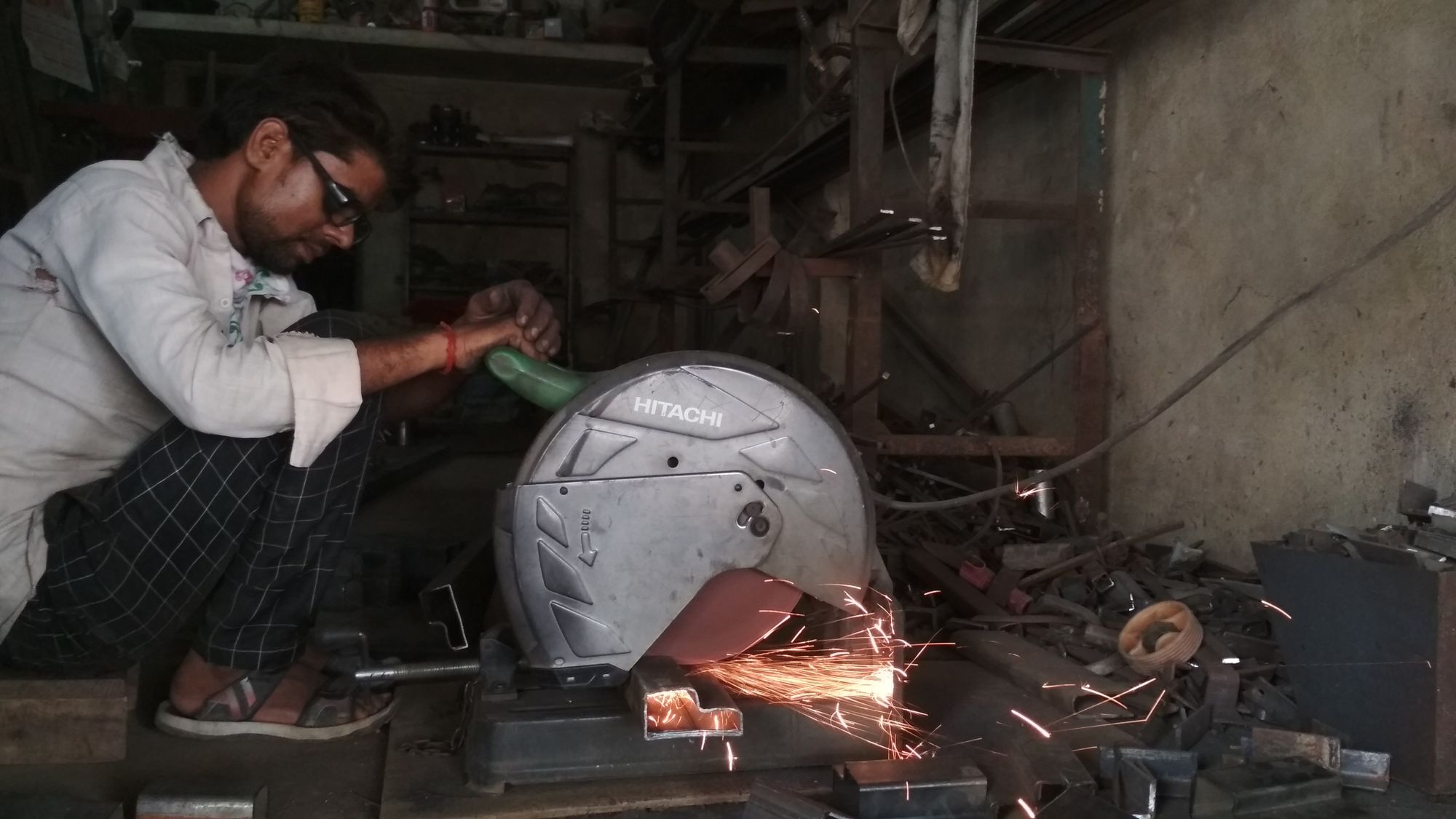Do you know how the Contract Laborers are paid their wages? On what grounds are wage deductions made? Which Act controls the wages paid out to contract labor? What is the central wage slip Form XIX? How is the record of wages paid maintained? What information should each contractor note down in the central wage slip Form XIX?
Here we will answer all these questions.
The Contract Labor (Regulation & Abolition) Act, 1970 aims to monitor, control, and form new laws related to the employment of contract workers in certain facilities. The Act also governs the provisions of certain relevant matters regarding labor and has the right to abolish contract work in certain circumstances.
Central and state regulations have been enacted to ensure effective control and oversight of the law. This is widespread throughout India, and because contract worker employment requires contract worker registration, any business that employs 20 or more workers for the last 12 months comes under its jurisdiction.
The law applies to the place or contractor.
Table of Contents
- About the Central Wage Slip Form XIX
- Important Information Regarding the Work of the Employee Needs to be Entered in the Central Wage Slip Form XIX
- A Sample of the Central Wage Slip Form XIX
- Calculating Wages, Labor, and Holiday Payments for a Central Wage Slip Form XIX
- How to Calculate the Wages to be Specified in the Central Wage Slip Form XIX
- Deductions to be Noted Under the Central Wage Slip Form XIX
- Weekly Holidays to be Considered for Wages Under the Central Wage Slip Form XIX
- Calculation of Weekly Working Hours to be Considered in the Central Wage Slip Form XIX
- Working Hours that Make Up a Normal Working Day
- Overtime Pay to be Considered in Central Wage Slip Form XIX
- Register and Record Formats
- Creating Registers and Other Records
- Conclusion
- How Deskera Can Assist You?
- Key Takeaways
About the Central Wage Slip Form XIX
The central wage slip Form XIX is more like a salary slip maintained by the contractor or the owner regarding the kind of work delivered by each employee and the wages paid out to them.
It incorporates all details regarding the contractor and the workers like name, father's name, nature of work, location, and whether the central wage slip Form XIX is prepared for a week or a month.
Important Information Regarding the Work of the Employee Needs to be Entered in the Central Wage Slip Form XIX
Step 1 -The first part of the central wage slip Form XIX while calculating the net wages for each employee, is the number of days worked by each employee
Step 2 - Secondly, the quantity of work done by them is assessed in the central wage slip Form XIX to calculate wages based on overtime or deduction if the worker was unable to complete his given target
Step 3 - Next, the central wage slip Form XIX contains the rate of daily wages/piece rate of the work delivered by the worker. This is a pre-decided rate percolated to the worker by the employer before they start working for the contractor
Step 4 - If the worker has worked for more hours than he was required to or rostered for, he would be eligible for overtime. This amount of overtime wages will be entered in the central wage slip Form XIX to be added to the wages for that particular time-period
Step 5 - After considering the above points, the number of gross wages payable will be calculated and noted down in the central wage slip Form XIX
Step 6 - If there are any fines, penalties, or deductions (discussed below), these will be deducted from the central wage slip Form XIX
Step 7 - After making the deductions from the gross wages payable in the central wage slip Form XIX, the final figure will be noted and will be termed as the Net amount of wages paid
Step 8 - The central wage slip Form XIX will be eventually signed and attested by the contractor or his representative
A Sample of the Central Wage Slip Form XIX
Central Wage Slip Form XIX
1[See rule 78 (1) (b)]
Wage Slip
Name and address of the contractor
Name and father's/husband's name of the workman
Nature and location of work
For the week/fortnight/month ending
- Number of days worked
- Number of units worked in case of piece-rate workers
- Rate of daily wages/piece rate
- Amount of overtime wages
- Gross wages payable a
- Deductions, If any
- The Net amount of wages paid
Initials of the Contractor or his representative.
Calculating Wages, Labor, and Holiday Payments for a Central Wage Slip Form XIX
How to Calculate the Wages to be Specified in the Central Wage Slip Form XIX
Calculating the value of basic service wages is done according to the instructions issued by the central government from time to time. Payments made by an employer to an employee are considered wages for the work completed for a given period of days/hours, which need to be noted in the central wage slip Form XIX.
Payments made by an employee to an employer or their agent are considered wage deductions within the meaning of this rule.
Deductions to be Noted Under the Central Wage Slip Form XIX
Under no circumstances should the monthly deduction rate exceed one-quarter of the month's wages. Approved deduction from the wages of a person engaged in scheduled employment must be one or more of the following types:
- Fines related to such acts and omissions of workers that the central government may determine on its behalf by general or special orders
- Deduction for the absence of work
- Deduction of damage or loss of goods expressly consigned under the employee's control or financial loss he is liable for if such damage or loss is directly attributable to his negligence or default
- Deductions for housing provided by the employer
- Deductions for such equipment and services provided by the employer that the central government may permit by general or special order
- Deductions for prepayment refunds or adjustments to overpayments of wages: provided that such prepayments do not exceed an amount equal to the employer's two calendar month wages
- Income tax deduction payable by employees
- Deductions that must be made by order of a court or other competent authority
- Enrollment in a Provident Fund and repayment of down payments to which the Provident Fund Act of 1952 (19 of 1952) applies, or deductions from a Provident Fund permitted within the meaning of Section 58A of the Indian Income Tax Act, 1922 (11 of 1922)}, or any fund for that purpose approved by the Central Government during the period of such approval
- Deductions for payments to the cooperative approved by the central government
- Deductions for the payment of life insurance premiums to the Indian Life Insurance Corporation, which was established under the Life Insurance Act of 1956 (31 of 1956)
- Deductions to recover adjustments in amounts other than wages paid to an employee over the amount payable to the employee
- Employee's written approval (usually only once, not necessarily with each deduction) for the purchase of Indian or state government securities or deposits with the Postal Savings Fund to promote savings schemes
- Deductions made with the written approval of employees for contributions to the National Defense Fund or the Prime Minister's National Relief Fund or other funds such as the Central Government Approved Defense Savings System
- The collection of loans made for housing or other purposes approved by the Central Government, and the deduction of interest on such loans, shall be covered by the Central Government to the extent to which such loans are granted
Weekly Holidays to be Considered for Wages Under the Central Wage Slip Form XIX
By the provisions of this rule, employees with planned employment whose minimum wage is set by law shall be given a one-day break each week. This is usually Sunday, but the employer can choose to specify a different day of the week as a holiday for each worker or group of workers in that scheduled employment.
- As noted in the central wage slip Form XIX, the weekly holiday is a paid holiday and will be eligible for wages
- In the proposed employment relationship, the employee must work uninterrupted with the same employer for at least six days
- In addition, employees must be notified of the dates designated as rest days and subsequent changes
- Employees can work on scheduled employment holidays unless they have or plan to have one alternative holiday in any of the previous five days
Calculation of Weekly Working Hours to be Considered in the Central Wage Slip Form XIX
Working Hours that Make Up a Normal Working Day
- The working hours that make up a normal working day are: for adults – 9 hours; for children – 4 and a half hours
- The working days of adult employees must be configured not to exceed 12 hours on any day, including breaks
- The working hours of an adolescent are the same as the number of hours of an adult or child, depending on whether they are registered as an adult or child by a competent practitioner licensed by the central government
- Sub-rules (1) to (3) for workers in agricultural employment are subject to changes that may be announced at any time by the central government
- Children are not allowed to work for more than four and a half hours a day
- Nothing in this Rule shall affect the provisions of the 1948 Factory Act (63, 1948)
If a worker is scheduled to work night shifts works beyond midnight, in that case:
- A holiday will be provided for the whole day for rule 23 for twenty-four consecutive hours beginning from the time when his shift ends
- The following day in such a case shall be deemed to be twenty-four hours beginning from the time when such shift ends
- The hours after midnight during which such worker was engaged in work shall be counted towards the previous day
Overtime Pay to be Considered in Central Wage Slip Form XIX
- Workers are entitled to earn overtime if they work more than 9 hours a day or more than 48 hours a week
- In the case of agricultural employment, 1.5 times the normal wage will be applied
- For other planned employment, double the normal wage rate will be applied
All employers are required to keep overtime records on Form IV. If the workers are working overtime at the company, the employer should fill in the specified columns. The register should be kept at work and kept up to date.
If there is no overtime in the payment period, a "zero" entry is created for the entire register at the end of the payment period. It also specifies the payment period associated with the "zero" entry. The same will be noted under the central wage slip Form XIX for wage calculations.
Register and Record Formats
Wage records in the form of a central wage slip Form XIX and other related forms must be maintained by each employer in the workplace. Each employer must complete the payment period entry for each individual employed at the place of business:
- Until the due date for that payment period
- Should have the employee's signature or thumbprint on the form on the payment date
- Receipts from at least one employer should be properly maintained in the register, and the central wage slip Form XIX
- The central wage slip Form XIX and the payslip entry must be certified by the employer or a person authorized by the employer
- The presence of each employee employed at the facility should be taken within 3 hours of the start of the day of the shift
- Attendance of workers must be recorded daily on the given form for calculation of wages under central wage slip Form XIX
- Retention of Registers is mandatory under Rule 21(4), 25(2), 26(1), and 5 {Model registers are retained under Rule 26 (5) for three years
Creating Registers and Other Records
- Upon request, all registers and records that the employer must keep under these rules can be checked and verified by the inspector
- Facility Inspection: The inspectors may require you to present your register and records to your office or another public location near your employer
- In the event of a violation of law or the provisions of these rules, and the inspector has notified, inspected, or otherwise notified the employer, they must correct and submit the relevant compliance report to the inspector before the date specified
- If necessary, the inspector stipulates that he may request that a register and record be created at his office or another public place near his employer
- Notwithstanding what is contained in these rules, if the employer uses a combined (alternative) form to avoid duplication to comply with the provisions of another law or a rule drafted under it, the employer can use the appropriate alternative form instead
Conclusion
The central wage slip Form XIX contains details of the main employer. This includes payroll cycles (weekly, biweekly, monthly), job types, places of work, employee details, wage rates, overtime details, total wages, deductions, and branches related to actual wages paid.
Contract workers should be paid the minimum wage and compensation. Even after payments have been released according to the required minimum wage plate, the primary employer needs to ensure that the contract worker receives these.
For this purpose, it is recommended that the primary employer maintain the central wage slip Form XIX and a list/record of compensation paid to the contractor and collect evidence that the contract worker is receiving compensation. The main employers can monitor wage payments and access payslips and other records.
The central idea of the central wage slip Form XIX is to maintain the wage calculation of each employee and a record of it to be maintained and retained by the employer.
How Deskera Can Assist You?
As a business, you must be diligent with the employee payroll system. Deskera People allows you to conveniently manage payroll, leave, attendance, and other expenses. Generating payslips for your employees is now easy as the platform also digitizes and automates HR processes.
Key Takeaways
- The primary employer is expected to fill the central wage slip Form XIX containing details of payroll cycles, job types, employee details, wage rates, overtime details, total wages, deductions, and the number of wages paid out to the employees
- The employer must comply with the legal obligations while filling the central wage slip Form XIX which the main employer or his representative should sign
- The employer should maintain the records of the central wage slip Form XIX which a facility inspector can verify at any time
- The central wage slip Form XIX should be kept by the contractor, not the primary employer
- A centralized database related to the central wage slip Form XIX ensures transparent sharing of records; this reduces the responsibility of key employers and makes decision-making easier
- "Wage," as specified in central wage slip Form XIX as the compensation paid to an employee when the explicit or implied terms of the employment contract are complied with for a period
- Under the central wage slip Form XIX, the contractor must create and maintain accurate and complete records for all employees (including working hours and wage payments) and issue a payslip for each employee
- These records management and payroll obligations recorded under central wage slip Form XIX as stated under the Contract Labor (Regulation & Abolition) Act, 1970 are designed to ensure that employees receive the right wages and qualifications
Related Articles












